Survival Stories
Against All Odds: A Survivor’s Tale from America’s Wilderness

As the sun set on the horizon, I embarked on a journey into the heart of America’s wilderness. I had always been drawn to the outdoors, and this trip was no different. The thrill of adventure and the opportunity to test my survival skills in the wild was exhilarating. However, little did I know, this trip would turn into a harrowing tale of survival against all odds.
I began my journey like any other experienced outdoorsman, with careful planning and preparation. I packed the essentials: a tent, sleeping bag, food, water, clothing, and my trusty survival kit. This kit contained a fire starter, knife, compass, first aid supplies, and other items necessary for surviving in the wild.
The first few days went smoothly, as I hiked through dense forests, crossed crystal-clear streams, and marveled at the beauty of nature. However, on the fourth day, disaster struck. While hiking along a narrow ridge, I slipped on a wet rock and tumbled down the steep slope. My backpack and gear were scattered, and I was left injured and disoriented.
With a sprained ankle and bruised ribs, I knew I had to act quickly to survive. I gathered what remained of my gear and set up a makeshift shelter using branches and leaves. As night fell, I started a fire to keep warm and ward off predators. Despite the pain in my ankle, I refused to let it deter me from my ultimate goal: survival.
The next morning, I assessed my situation. My food supply was dwindling, and I was unsure of my exact location due to my disorientation after the fall. I knew I had to find a way to signal for help or risk perishing in the wilderness. I decided to create a large signal fire in a nearby clearing, hoping it would be spotted by passing aircraft or search parties.
For several days, I tended to my injuries, rationed my food, and maintained the signal fire. I also fashioned a makeshift crutch from a sturdy branch to aid in my mobility. Despite the pain and uncertainty, I refused to give up hope. I knew that my survival skills and determination would see me through this ordeal.
On the seventh day, my perseverance paid off. A search and rescue helicopter spotted the smoke from my signal fire and flew in to investigate. As I heard the rotors approaching, I knew that I had triumphed against all odds. The rescuers quickly assessed my condition and airlifted me to safety. I was battered and bruised, but alive and grateful for my survival instincts.
This experience taught me many valuable lessons. First, never underestimate the power of preparation. My survival kit and knowledge of wilderness skills were crucial in my ability to endure this ordeal. Second, always maintain a positive attitude and never give up hope. My determination and will to live fueled my efforts to signal for help and ultimately led to my rescue.
Always respect the power of nature and understand the risks involved in venturing into the wild. While the outdoors can be a source of great joy and adventure, it can also be unforgiving and dangerous. By being prepared, staying vigilant, and respecting the environment, we can continue to enjoy the beauty and challenges of America’s wilderness.
This tale of survival against all odds serves as a reminder of the importance of preparedness and perseverance in the face of adversity. As a survivalist and writer for Grits and Gear, I am committed to sharing my experiences and knowledge to help others navigate the challenges of the great outdoors. Whether you’re an experienced adventurer or a novice explorer, remember that preparedness and determination are the keys to overcoming any obstacle in the wild.

Survival Stories
Unseen Advantage: Law Enforcement’s Rapid Adoption of Optics

In the world of law enforcement and survival, the ability to quickly and accurately assess a situation can make all the difference. This is why the rapid adoption of optics by law enforcement agencies is hardly surprising. These tools provide a wealth of visual information, aiding in making more informed decisions. A key factor in the selection of these optics is the window size, but it seems that co-witness sights, which can sometimes occupy half of the entire optic window, often don’t receive the attention they deserve.
“Without question, the speed with which LE agencies have adopted optics is testament to the advantage they offer: more visual information that yields better decisions.”
Interestingly, suppressor height sights are frequently paired with optics. To comprehend why this particular sight remains a popular choice when selecting co-witnessing sights, we must journey back in time. Around 2009, shooters, both professional and non-professional, began to repurpose a solution initially designed for Close Quarters Battle (CQB) rifle work for use on pistols.
The Trijicon RMR, a compact electronic optic, was a welcome alternative to the larger optics typically seen on competition pistols. Its smaller size offered more holster options, less likelihood of snagging in the field, and a more robust window and housing. As a result, it addressed many of the issues raised by professional users, leading to a shift towards an optics sighting solution within the firearms community.
“The smaller footprint meant more holster options, less to get caught on while in the field, and a less delicate window and housing.”
This shift was spearheaded by individuals in the military, law enforcement, defensive firearms instruction, and competition professionals. With the introduction of these optics, performance improved, and new shooters were able to develop accuracy and speed more quickly. The instinctual focal plane response to stress, which previously had to be trained out, could now be utilized as an asset by Firearms Instructors working with students who had optics on their pistols.
“Performance increased, accuracy and speed developed sooner with new shooters, the intuitive and instinctual focal plane response to stress no longer needed to be trained out—and instead, the threat-focus could now be an asset used by Firearms Instructors working with students who had optics on their pistols.”
As the popularity of optics grew, the aftermarket and firearms manufacturers responded by supporting this “new” sighting system. However, one critical component of the system was often overlooked: the back-up sights. This oversight highlights the need for a comprehensive approach to firearm optics, one that considers all elements of the sighting system to ensure optimal performance and safety.
Our Thoughts
The adoption of optics in law enforcement is a testament to the technology’s effectiveness. It’s no surprise that tools that enhance visual information, thus enabling better decision-making, have become a staple in the arsenal of law enforcement agencies.
The rise of the Trijicon RMR is particularly noteworthy. Its compact size and robust design addressed many of the practical concerns of professional users, leading to a broader acceptance of optics as a sighting solution.
The benefits of these optics extend beyond their practicality. They have brought about a shift in the training of new shooters, turning the instinctual focal plane response to stress into an asset rather than a hurdle to overcome. This has undoubtedly contributed to the improved performance observed among new shooters.
However, the focus on the main optic often results in the neglect of back-up sights. This is a reminder that a comprehensive approach to firearm optics is necessary to ensure optimal performance and safety. After all, a tool is only as good as the system supporting it.
Let us know what you think, please share your thoughts in the comments below.
Survival Stories
Mental Resilience: The Overlooked Key to Survival Success
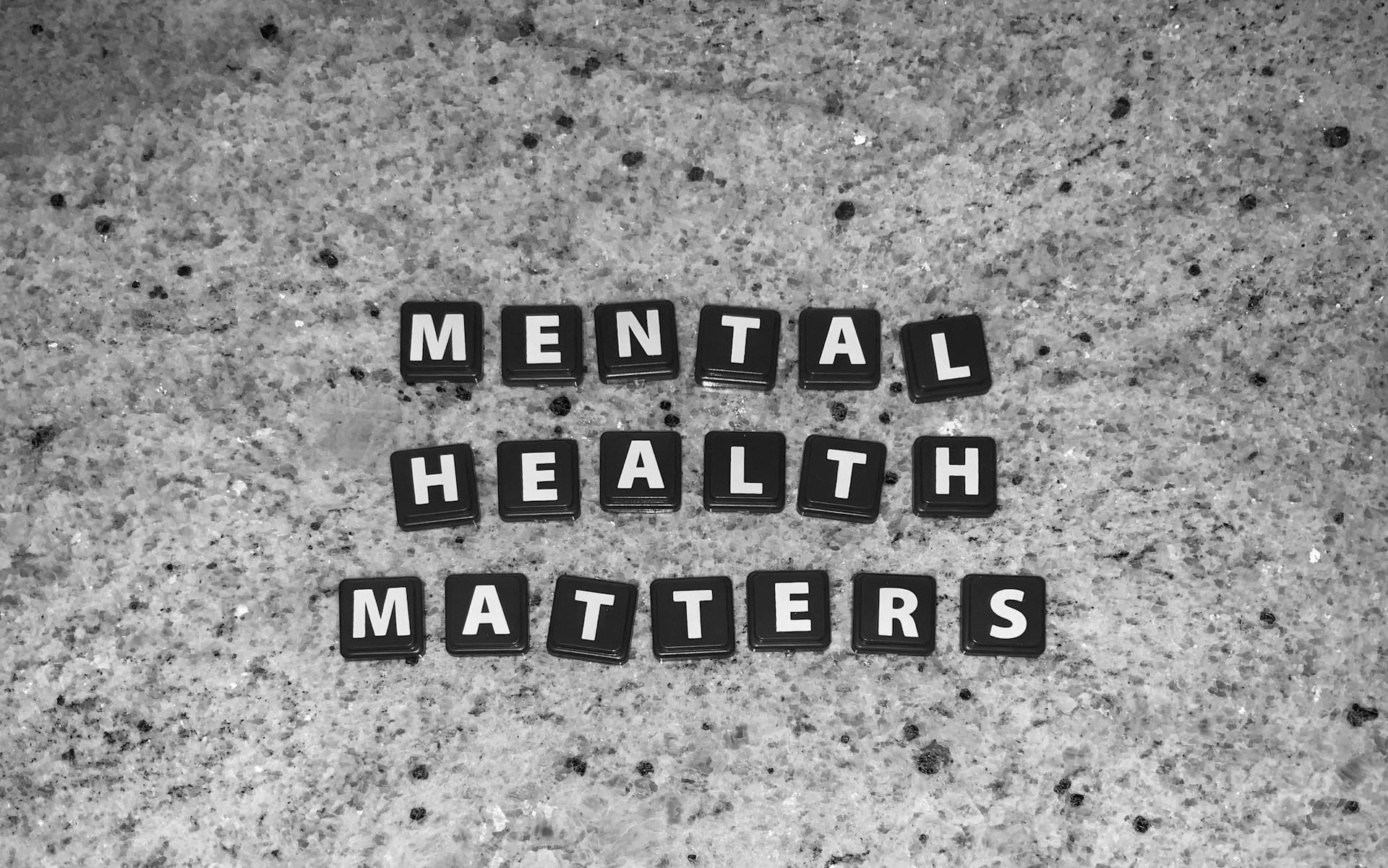
In the realm of survival, we often focus on the physical aspects: the gear, the skills, the terrain. Yet, one crucial element often overlooked is our mental health. As a seasoned survivalist and a licensed mental health therapist, I’ve experienced firsthand the importance of mental resilience in a crisis.
I recall an incident during my first exploration of Red Rock Canyon. The vast, humbling landscape was a sight to behold, but it was also a formidable challenge. Despite my preparations, I found myself lost on a wild game trail, far from the intended path.
“Okay, no big deal,” I reassured myself. “I’ll just retrace my steps.”
But the creeping sense of panic was undeniable. I was low on water, surrounded by thick brush, and far from any signal. It was in this moment that my mental health training became as crucial as my survival skills.
“If anyone can figure this out, I can.” I thought. Or rather, tried to convince myself….
The human brain has a built-in survival mechanism known as the fight-flight-freeze response. When faced with danger, our heart rate increases, our pupils dilate, and our breathing becomes rapid. While these physiological changes can enhance our strength and speed, they can also lead to panic attacks, which can be detrimental in a survival scenario.
Soldiers and first responders are trained to manage this response, and so can civilians. Understanding mental health first aid can be a lifesaver in personal emergencies or when trying to calm someone else in a crisis.
“Okay…” I thought, “let’s just backtrack a little. See if I can’t find the main trail.”
I remembered the acronym S.T.O.P., taught in wilderness survival classes: Sit, Think, Observe, Plan. I sat down, focused on my breathing, and began to regain control of my racing thoughts.
“Breathe.” I thought. “In through the nose, slow. SLOW. Hold it for a few seconds. Now release through the mouth even slower. Pause. Repeat.”
I knew I had to control my thoughts to improve my feelings and make good decisions. Catastrophic thinking like “I’m gonna die” or “What if a rattlesnake bites me?” could trigger panic mode.
“Okay, what do we know?” I thought. “I know I can’t be too far off-course, no more than a couple miles. I know a few people knew generally where I was going (but not the specific trailhead) and that I expected to be back by nightfall. I know I have survival training and some kit with me that would help me make it through the night if needed. I can do this.”
After observing my surroundings and assessing my resources, I made a plan. I decided to head in the direction of what I believed to be a road, using a large branch to tap the ground in front of me to ward off any potential rattlesnakes.
In the end, I made it back to my vehicle without having to spend the night in the desert. The experience was a stark reminder of the importance of mental health in survival situations.
In the aftermath of a crisis, people will be in panic mode. Knowing how to guide someone through the stresses of a crisis can help mitigate some of the negative effects of traumatic events.
First, ensure the scene is safe. Then, assess the group, find helpers, and triage the situation. Ground the person by asking them to describe their surroundings and their feelings. Encourage slow, deliberate breathing and validate their experiences.
Long-term effects of repeated activation of the fight-flight-freeze response can include panic attacks, nightmares, and flashbacks. If you’re prone to these symptoms and find the techniques described here aren’t helping, consider seeking help from a licensed therapist.
Remember, it’s not a matter of being weak or strong. Some of the bravest individuals I’ve worked with have sought therapy for their symptoms. It takes great strength and bravery to ask for help.
Since my experience in Red Rock Canyon, I’ve incorporated mental health first aid and awareness into my survival teachings. I’ve also adjusted my approach to hiking, ensuring I communicate my exact route and expected return time, carry more water, and stay focused on the trail.
Survival isn’t just about the physical. It’s about the mental too. And with the right skills and mindset, we can navigate any crisis with resilience.
Our Thoughts
This compelling account underscores the often overlooked but critical role mental health plays in survival scenarios. The author’s experience in Red Rock Canyon drives home the importance of not just physical preparation, but mental preparedness as well.
The fight-flight-freeze response, while instinctual, can be detrimental if not properly managed. As survivalists, we should heed the author’s advice and learn to control this response, much like soldiers and first responders are trained to do.
The S.T.O.P. method is a useful tool in regaining control of our thoughts and feelings in high-stress situations. It’s not just about physical survival skills, it’s about mental resilience and clarity of thought.
Moreover, the importance of understanding mental health first aid cannot be overstated. It can be a lifesaver, not just for ourselves, but for others in crisis.
Ultimately, the author’s story is a reminder that survival isn’t just about the gear, the terrain, or the skills — it’s about the mind too. And in the face of adversity, with the right mindset, we can navigate through any crisis with resilience.
Let us know what you think, please share your thoughts in the comments below.
Survival Stories
Survival Essentials: Choosing and Mastering Your Firearm for the Wilderness

In the world of survival, the value of a reliable and accurate firearm cannot be overstated. Bradford Angier, a respected voice in the survival community and author of “How to Survive in the Woods,” once stated, “The best survival weapon, it follows, is a flat and hard shooting rifle. There is no need to append that it should be rugged, accurate, and durable.” This statement, penned in 1969, remains as true today as it was then.
In Angier’s era, the leading .22 rifles included the Armalite AR-7, Marlin model 60, Ruger 10/22, and Remington Model 66. Despite some of these models no longer being in production, they remain among the best survival firearms available today, and can often be found in excellent condition on used gun racks.
Angier’s writings also sparked a debate that continues to this day: if you could only have one gun, should it be a .22 for taking small game and allowing you to carry more ammo, or a larger centerfire rifle capable of taking down a larger animal for more substantial rations? This question remains a popular topic of discussion among survivalists.
Since Angier’s time, survival rifles have gained popularity, with many companies now offering models with features such as take-down capabilities, synthetic furniture, and adjustable stocks. The COVID pandemic and resulting meat shortages have also led to a surge in firearm ownership, as people consider the possibility of hunting their own food if supermarkets can’t provide.
However, owning a survival rifle is only part of the equation. Knowing how to use it effectively is equally, if not more, important. This includes understanding the fundamentals of marksmanship and knowing how to adapt to different shooting positions.
In the early 20th century, the three primary shooting positions were standing, kneeling, and prone. These positions offer varying degrees of stability, with prone being the most stable but also the most time-consuming to get into. More likely, shots will be taken while standing, sitting, or kneeling with the rifle supported against a tree or other object.
Training with a .22 rifle can be an effective way to practice these positions and make adjustments to your shooting technique. The recoil of a .22 is much less jarring than that of a larger centerfire rifle, making it a more comfortable option for sustained practice.
Each shooting position has its own advantages and trade-offs. For example, the prone position offers great stability but takes time to get into and can be uncomfortable in cold weather. The standing position is quick and allows for easy reloading but is less stable. In a survival situation, you may need to use variations of these positions, or even shoot from your non-dominant side.
Training should mimic real-world scenarios as closely as possible. This means using available objects for increased stability, such as a backpack or tree branch, and adjusting the size of your target as you move from more stable to less stable positions.
Training with a .22 rifle can also be a cost-effective way to improve your marksmanship. The cost of ammunition has risen significantly in recent years, making it more expensive to practice with larger centerfire rifles. The fundamentals learned with a .22 can later be applied to centerfire ammunition.
A survival rifle is a valuable tool for any survivalist, but knowing how to use it effectively is crucial. This includes understanding the fundamentals of marksmanship, being able to adapt to different shooting positions, and training in a way that mimics real-world scenarios. As Bradford Angier once said, the best survival weapon is a flat and hard shooting rifle, but it’s also important that it be rugged, accurate, and durable.
Our Thoughts
Bradford Angier’s wisdom about the value of a reliable, accurate firearm in survival scenarios still rings true. In today’s world, the importance of firearm adaptability, durability and accuracy is even more pronounced, given the uncertainties that we face.
The debate on whether to choose a .22 rifle for small game and larger ammo capacity or a centerfire rifle for larger game and substantial rations is a testament to the diversity of survival scenarios. This highlights the need for individuals to understand their specific survival needs and equip themselves accordingly.
The advancements in survival rifles, from take-down capabilities to adjustable stocks, demonstrate the evolution in survival gear. This evolution is driven by the need for versatility and adaptability in survival situations. The surge in firearm ownership due to the COVID pandemic also underscores the importance of self-reliance in uncertain times.
However, owning a firearm is just one part of the equation. The mastery of different shooting positions, understanding of marksmanship fundamentals, and the ability to adapt are key to survival. Training with a .22 rifle is an effective and cost-efficient way to hone these skills.
In conclusion, survival is about more than just having the right tools. It’s about the knowledge and skills to use them effectively. As survivalists, we must continue to adapt, learn and prepare for the unexpected.
Let us know what you think, please share your thoughts in the comments below.
-
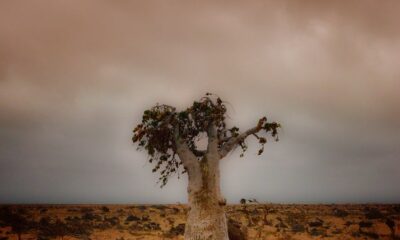
 Survival Stories12 months ago
Survival Stories12 months agoEmily’s 30-Day Experience of Being Stranded on a Desert Island
-

 Tactical5 months ago
Tactical5 months agoMidnight SUV Theft Interrupted by Armed Homeowner’s Retaliation
-

 Preparedness2 months ago
Preparedness2 months agoEx-Ballerina’s Guilty Verdict Sends Tremors Through Gun-Owner Community
-
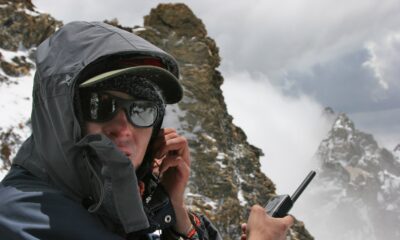
 Preparedness10 months ago
Preparedness10 months agoMethods for Communicating During Power Grid Failure
-

 Nature and Wildlife12 months ago
Nature and Wildlife12 months agoDefending Yourself from Dog Attacks
-
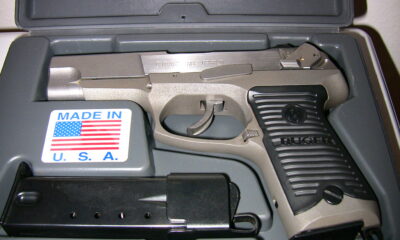
 Tactical12 months ago
Tactical12 months agoTop Handguns for Personal Protection in the Wilderness
-

 Tactical5 months ago
Tactical5 months agoArmed Robber Meets Surprise Resistance at California Gaming Store
-
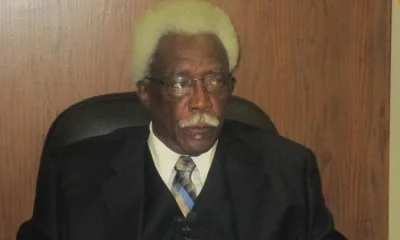
 Preparedness2 weeks ago
Preparedness2 weeks ago10-Year-Old Arrested in Shocking Double Homicide of Former Mayor